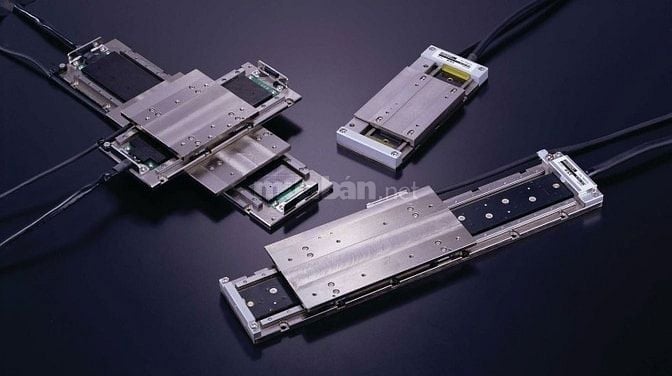- Trang chủ
- Đồ điện tử
- Đồ điện tử khác
- TP.HCM
- Quận 1
- Động cơ tuyến tính Ironcore linear motor và Ironless linear motor
Động cơ tuyến tính Ironcore linear motor và Ironless linear motor
Thỏa thuận
Quận 1, TP.HCM
Cập nhật: 23/09/2025
Tin này đã hết hạn nhưng có thể vẫn còn giá trị giao dịch hoặc tham khảo.
Hãy sử dụng công cụ tìm kiếm để tìm những tin đăng mới nhất.
Linear motion refers to the movement of an object or component along a straight path, a concept that lies at the core of countless automation systems today. From CNC machines and robotic arms to advanced medical devices and semiconductor production lines, linear motion systems enable fast, precise, and repeatable operations.
This article covers what linear motion is, how it works, key system types, and its vital role in today’s industries. If you want to boost performance and stay ahead in automation, understanding linear motion is a smart move.
What is Linear Motion?
Linear motion is the backbone of modern automation. It refers to motion along a straight path, as opposed to rotary motion which occurs around an axis. Whether it’s in high-speed packaging, precision robotics, or semiconductor manufacturing, linear motion systems are the invisible engine driving performance, speed, and accuracy.
In the context of industrial automation, linear motion is not just a mechanical concept—it’s a strategic advantage. With the right linear motion control systems and drives, businesses can execute ultra-precise positioning, seamless material transport, and synchronized multi-axis coordination at scale.
There are several types of linear motion systems, including:
Direct-drive systems using linear motors (e.g., ironless or ironcore),
Ball screw or lead screw systems for mechanical actuation,
Belt-driven systems for longer travel ranges with moderate accuracy.
Each technology delivers unique benefits, depending on the application demands for force, accuracy, and cost efficiency.
This article covers what linear motion is, how it works, key system types, and its vital role in today’s industries. If you want to boost performance and stay ahead in automation, understanding linear motion is a smart move.
What is Linear Motion?
Linear motion is the backbone of modern automation. It refers to motion along a straight path, as opposed to rotary motion which occurs around an axis. Whether it’s in high-speed packaging, precision robotics, or semiconductor manufacturing, linear motion systems are the invisible engine driving performance, speed, and accuracy.
In the context of industrial automation, linear motion is not just a mechanical concept—it’s a strategic advantage. With the right linear motion control systems and drives, businesses can execute ultra-precise positioning, seamless material transport, and synchronized multi-axis coordination at scale.
There are several types of linear motion systems, including:
Direct-drive systems using linear motors (e.g., ironless or ironcore),
Ball screw or lead screw systems for mechanical actuation,
Belt-driven systems for longer travel ranges with moderate accuracy.
Each technology delivers unique benefits, depending on the application demands for force, accuracy, and cost efficiency.
Lưu tin
Chia sẻ
Báo vi phạm
Ngày bắt đầu23/09/2025
Ngày hết hạn03/10/2025
Mã tin70099230
Nhắn tin
Gọi ngay
CÔNG TY CỔ PHẦN ĐỊNH ANH
MST: 0100255844, cấp ngày 11/12/2008
Văn phòng giao dịch:
- A35 Nam Quang 2, P.Tân Phong, Quận 7, TPHCM
- 38 Cửa Đông, P.Cửa Đông, Quận Hoàn Kiếm, Hà Nội
Email: trogiup@muaban.net
Hỗ trợ mua bán
Thông tin mua bán
